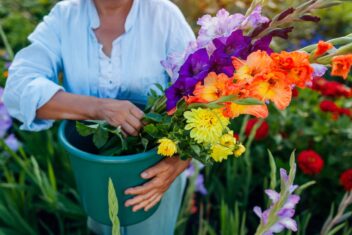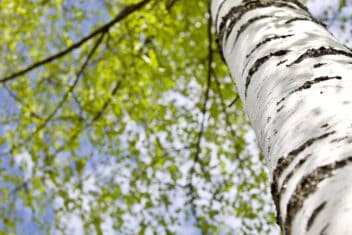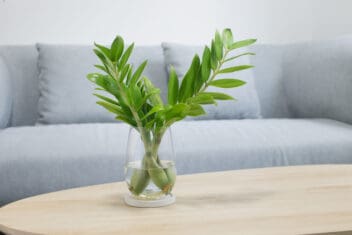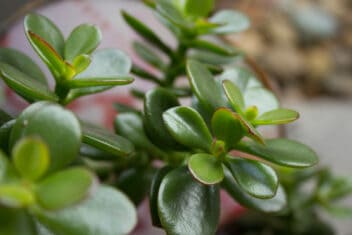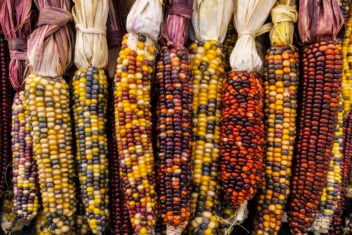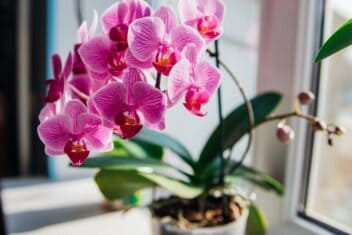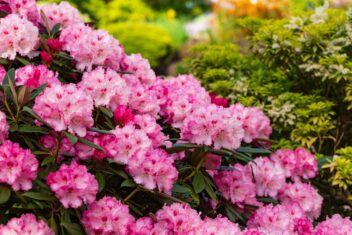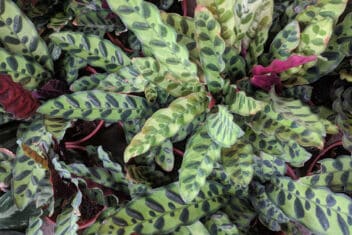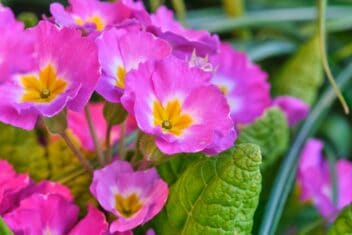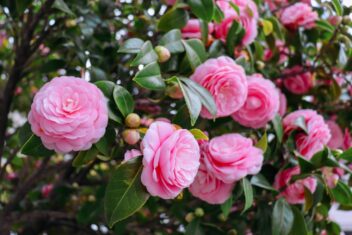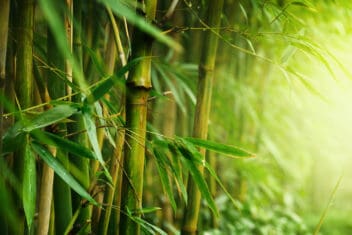Some plants are just iconic because they’re instantly recognizable. Philodendrons are one of those houseplants. They had their heyday in the 60s and 70s and have recently made a comeback, probably because they are just so darn easy to grow. Philodendrons are perfect for the houseplant growing beginner!
Plus, they come in a massive variety. There are climbing types and upright types in a huge range of leaf patterns, colors, shapes, and sizes.
If you want to try an iconic houseplant that is hard to kill, you can’t go wrong with philodendrons.
Get to Know Philodendrons
Philodendrons, otherwise known as sweetheart plants and heart-leaf, grow naturally in tropical rainforest environments in Central and South America. They suit most home environments and grow well with little attention. In USDA Growing Zones 9-11, you can also grow them outdoors.
There are around 489 varieties, and two growth habits: climbing/vining or upright. They can have one of three growth patterns:
- Epiphytic, which grow on other plants
- Terrestrial, which grow in soil
- Hemiepiphytic, which grow on other plants and from the soil
They are easy to propagate and need little maintenance.
Varieties of Philodendron
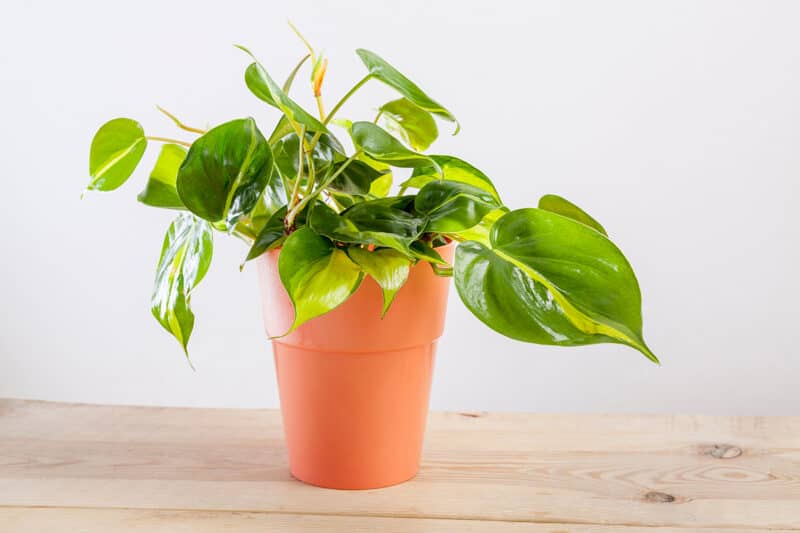
Remember, there are a huge number of species, cultivars, and hybrids of philodendron, so I’ll show a few that are common, look great and vary in shape and size.
Brasil
Philodendron hederaceum ‘Brasil’ is a hybrid that looks similar to pothos with more rounded leaves than heart-shaped.
Spade Leaf
Philodendron domesticum leaves are huge, which has earned it the nickname elephant ear. Each leaf is up to two feet long and are shaped like a spade.
Imperial Red
As the name suggests the stems of Philodendron erubescens ‘Imperial Red’ are deep red and the foliage is red when they’re young. As the leaves mature, they turn deep, glossy green. This is a very striking variety that draws lots of attention.
Fiddle Leaf
Philodendron bipennifolium is known as fiddle leaf or horse head philodendron because of its large, unusually-shaped, leaves. Each leaf is about about 10 inches long. Give this a stake or pole to climb and fiddle leaf will climb up to seven feet tall.
Black Gold
Philodendron melanochrysum is a real stand out. It’s a climbing variety with dark, almost black leaves with yellow veins.
Splitleaf
While this plant used to be classified as as part of the Philodendron genus, it’s actually a close relative, classified as Monstera deliciosa. It’s a big plant that grows up to eight feet tall. The leaves are like lobes coming from a central stem. This plant can be grown similarly to a philodendron.
How to Grow Philodendron
The best temperature for growing philodendrons is above 55ºF. Anything below this and the plant will suffer.
Use good quality potting soil that will hold moisture while draining away excess water. The pot should have good drainage.
You should apply the water to the soil until it runs out of the bottom of the container. Once the flow stops, remove any standing water in the container the pot sits in.
Allow the top inch to become dry to the touch before you water again.
Feed your philodendron with a balanced liquid fertilizer specifically for houseplants. In spring and summer when the sunlight is stronger, feed once a month.
Feed once every two months in the fall. Stop in the winter.
If the new are pale, the philodendron may be deficient in calcium or magnesium. Adjust your liquid fertilizer if necessary.
If your plant is smaller than it should be and growth is slow, it needs additional feeding.
Place your philodendron in a well-lit area, but out of direct sunlight. It loves warmth and humidity so near a window is good. If you can measure the humidity, above 60 percent is good. Don’t worry if it drops a bit.
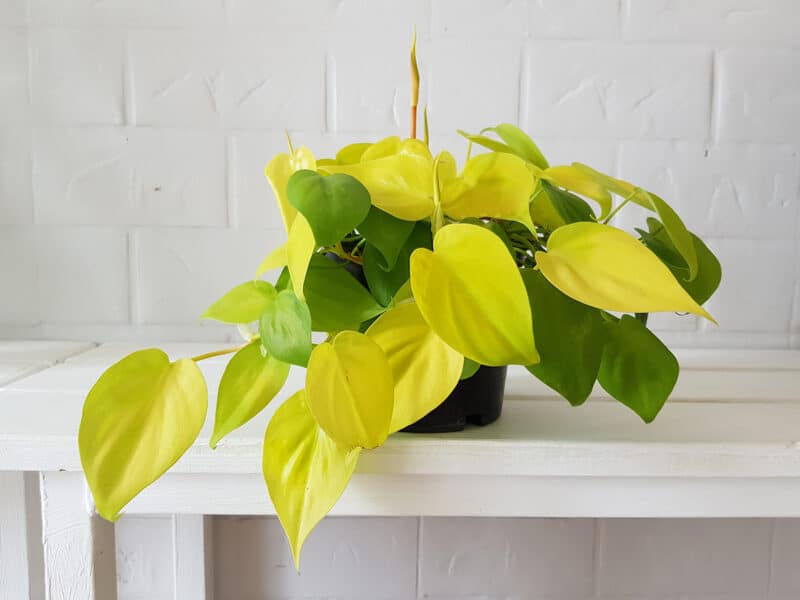
If your colored philodendrons are in too much shade the leaves will become dull. On the other hand, when the green leaves turn yellow, they may be getting too much light. Leggy plants might not be getting enough sunlight.
Growing In Water
Like pothos, you can grow philodendron in a water-filled vase or container.
Cut a six-inch piece of vine from a healthy plant. Make sure there are at least three nodes.
Insert this into a glass of water with the rim supporting the plant. You don’t want the whole thing to fall into the water.
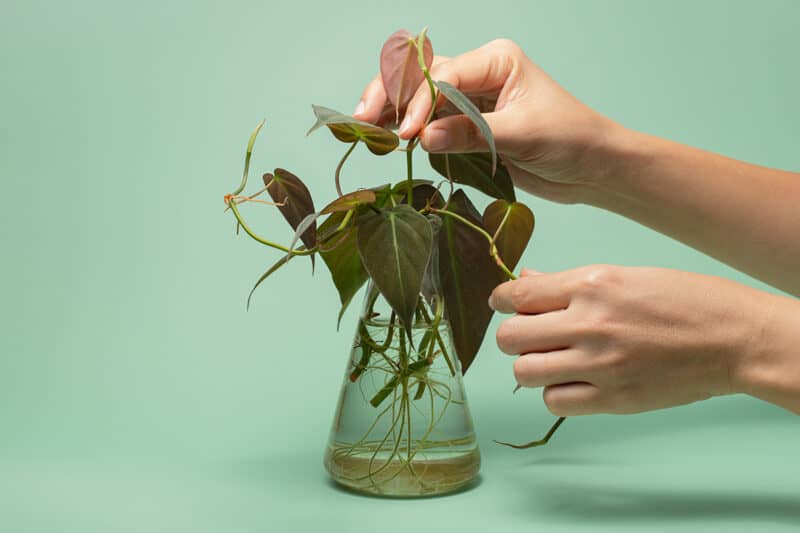
Change the water every week and wait for the roots to form. Soon enough, new foliage will form.
You can drop liquid fertilizer into the water if you think the plant is deficient in anything. A few drops will be enough to start with. Monitor the plant and add more if necessary. Eventually, you might want to move the plant to soil because water can only support a fairly small plant.
Growing Philodendrons Outside
In Zones 9 to 11, you can plant your philodendron outside. In cooler regions, you can keep them in pots during the warm weather and bring them indoors during the cold months.
A partially shaded area is necessary, especially with shade in the heat of the afternoon. They do well against a wall where the warmth can radiate, but reflected light is too strong.
The soil pH should be between 5.0 and 6.0. Make sure it is well-draining and has plenty of fertilizer or organic matter.
Feed once a month with a nitrogen-rich fertilizer. You can cut back if the growth is too much. Stop feeding in winter to give the plant a break.
Outside 60 to 70 percent humidity is best. Although you don’t want the temperature to drop below 55ºF, the odd drop is okay as long as it doesn’t go below 36ºF.
Pruning and Repotting Philodendron
You can prune your philodendron anytime. Whether you have your plant in a hanging basket, on a table, or trailing down a bookshelf, a quick prune now and then is good for it.
In a pot, push the large leaves back to expose the small new ones at the bottom on the edge. Pinch those small ones off, making sure the pinch is clean.
For trailing variants, cut any overly leggy stems above a node.
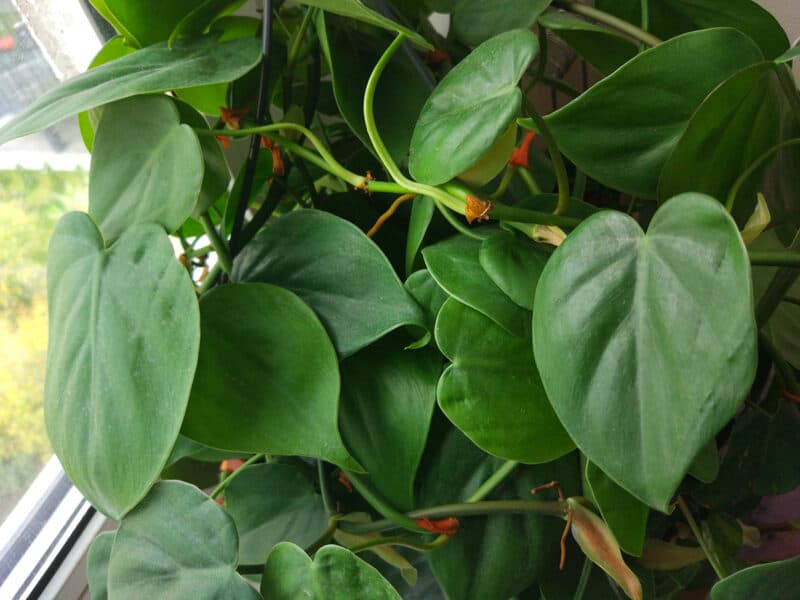
Basic pruning keeps the philodendron lush.
Repot your philodendron every two years or if it outgrows the pot sooner.
Propagating Philodendron
This is a very simple plant to propagate. You can grow roots in a pot of seed-raising mix or in water.
Cut a six-inch length of vine just above where a leaf connects. Remove all the leaves except the top two.
Lower the cut end of the stem into a glass jar of water. Don’t allow the leaves to be submerged. If they are, lower a stone or similar into the water to hold the stem a little higher.
In a couple of weeks, you should see roots develop. At this stage, you can transplant the stem to a pot with good quality potting soil.
When you propagate, take a number of cuttings to maximize your success. If they all grow roots, then that’s a bonus.
Common Problems and Solutions for Growing Philodendron
Philodendrons are seriously easy to succeed at growing, but that doesn’t mean that they are totally pest and disease-free. You might occasionally encounter one of these problems:
Spider Mites
Spider mites feed on the sap and soft tissue of plants and indoor plants are no different. They love dusty leaves and will attack a plant that is suffering from insufficient water.
With spider mites, your philodendron may be yellowing, or you could notice very fine webs on the foliage.
Wipe the leaves with a damp cloth to keep them dust-free and make sure you water well.
If the infestation is established, use an insecticide spray made for indoor plants. Insecticides with pyrethrum or neem oil work well.
Mealybugs
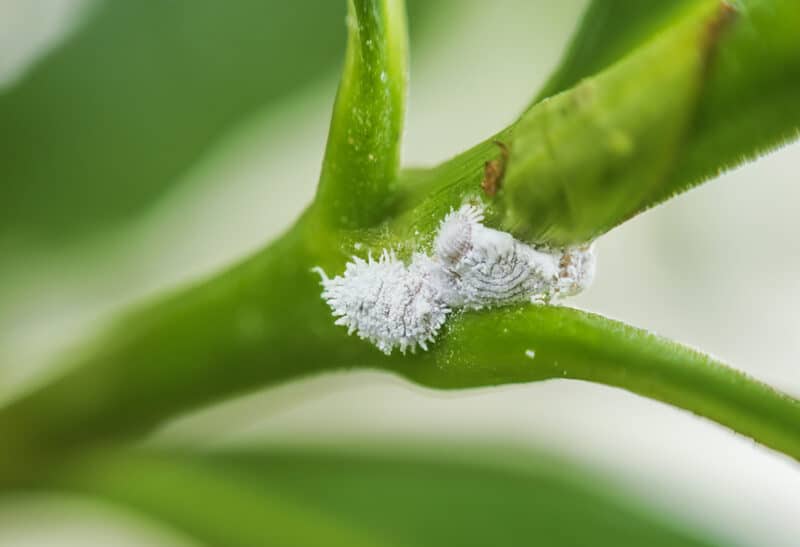
Are there little mini cotton balls on your philodendron? It’s probably mealybugs. You may be taken by surprise because they can appear overnight.
Mealybugs are sapsuckers that cause yellowing, leaf drop, and stunted growth.
If you have mealybugs on just one plant, you should quarantine it.
If you don’t have a lot of bugs on the philodendron, get a cotton dipped in rubbing alcohol and touch it on each bug. This is very satisfying.
The other option is insecticidal soap. Being inside, I go for an organic version. Follow the instructions closely.
Scale
No matter how diligent you are, some philodendrons will end up with scale – more sap sucking intruders.
They look like a little lump on the plant, but they are actually an insect that has secured itself to your plant and is happily feeding on it.
Use the cotton swab method above as soon as you see the first scale insect. Follow up with an insecticide spray to deal with the smaller larvae.
Use insecticide at night or when there is no sunlight on the leaves.
Bacterial Leaf Spot
If your plant has this disease, you will see red to brown spots with a yellow halo on the foliage. If the spots get large, they become dark brown and have an irregular shape. Remove any infected leaves and water the soil, not the foliage.
Bacterial Leaf Blight
If you see very dark, green spots on the plant’s leaves, you might have leaf blight. The spots may spread to where the leaf and stem meet. Eventually, the leaves rot in a foul-smelling wet blob.
Avoid it by not watering from overhead but at the soil level. Remove any leaves you think may be infected. Repot if you have overwatered and the potting soil isn’t draining properly. Use dry, fresh potting soil and a new container.
Cold Injury
When dark brown spots appear between the leaf veins, your philodendron could be exposed to consistent temperatures below 50ºF.
Maintain your room temperature above 55ºF and don’t try growing your philodendrons right next to the AC register.
Tip Curl
Tip curl is normally due to over-fertilizing a philodendron. The tip of the leaf curls downward and the outside of the leaf turns brown.
Reduce the amount of feeding and if you have used slow-release fertilizer, repot the plant with fresh potting soil.
Use Caution Around Pets
Like many indoor plants, philodendron may be toxic to animals. Make sure your trailing plants don’t hang where a playful animal will think it is a toy to be played with.

